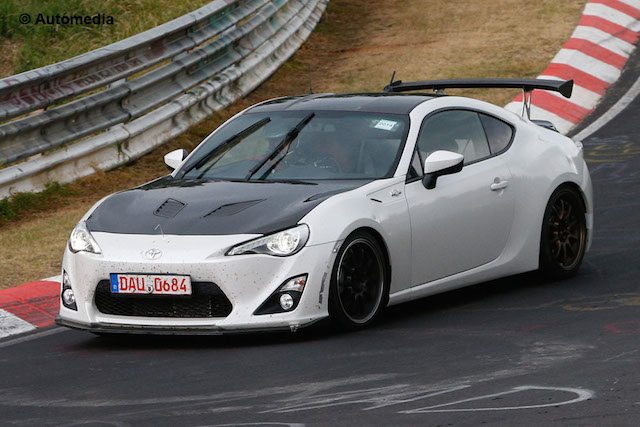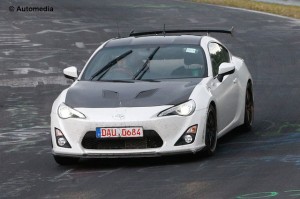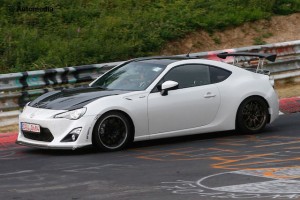
Is the Toyota 86 pictured here a go-faster lightweight version, with the duel air intakes in the bonnet helping to cool a more powerful flat-four engine? And are the bonnet, roof, and boot lid made of carbon fibre? The appearance of the prototype 86 (above) at the Nurburgring circuit in Germany has analysts searching for clues. The best guess is that it could indeed be a
lighter-weight version, given that the 86 chief engineer Tetsuya Tada recently said the facelifted coupe could make use of a larger boxer engine along with improved exhaust and intake systems developed in collaboration with Gazoo Racing. Also expected is a modified final drive ratio. 
the prototype’s bonnet, roof and boot lid are made of aluminium to help lower the vehicle’s already low centre of gravity, something it shares with sister car the Subaru BRZ. The large rear wing on the car here can be raised or lowered. A lighter, more powerful variant of the 86 was unlikely some months ago, when Toyota’s European projects director Gerald Killmann said slow sales had hamstrung a business case for more models, including the convertible seen at motor shows. “A faster version of that car would be at the top of most people’s wish lists, but like the cabriolet, it is hard to justify a business case to push either model into production, based on current sales,” Killmann said. He said Toyota was not sure why sales were lagging, because the 86 had received glowing reviews. “Personally, I think that engine could use a little bit more,” he said. News agency Automedia thinks the car on this page is a test mule for the facelifted 86 due next year – and the second-generation 86 due around 2018-19. It is understood Toyota might end up working with BMW on the second-gen car rather than Subaru. Why? Because the all-new 86 range will likely have an optional hybrid in the mix, just like the Toyota Camry sedan. 

